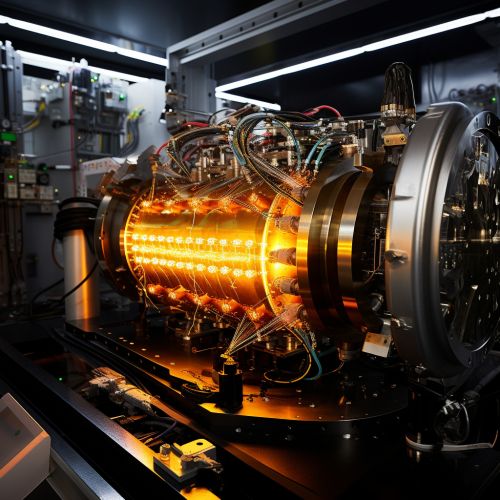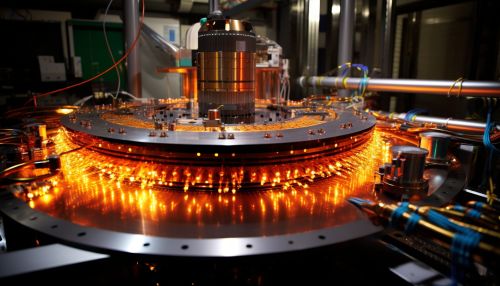Hadron
Introduction
A hadron is a composite particle made of quarks held together by the strong force in a similar way as molecules are held together by the electromagnetic force. They are categorized into two families: baryons, such as protons and neutrons, and mesons, such as pions and kaons.


Classification
Hadrons are classified into two families: baryons and mesons. Baryons are made of an odd number of quarks - usually three quarks. The most well-known baryons are the proton and the neutron, which make up the atomic nucleus. Mesons are made of a quark and an antiquark and are often involved in the transmission of the nuclear force within the atomic nucleus.
Baryons
Baryons are a family of hadrons that are made up of three quarks. The most common baryons are protons and neutrons, which are found in the nucleus of an atom. Other baryons include the lambda, sigma, xi, and omega particles, which are all heavier than protons and neutrons and are unstable, decaying into protons, neutrons, and pions.
Mesons
Mesons are a family of hadrons that are made up of a quark and an antiquark. They are often involved in the transmission of the nuclear force within the atomic nucleus. The most common mesons are pions and kaons.
Properties
Hadrons are characterized by their mass, spin, and their quantum numbers, such as baryon number, lepton number, and strangeness. These properties determine the behavior of hadrons in particle reactions and decays.
Mass and Spin
The mass of a hadron is determined by the mass of its constituent quarks and the energy of the gluon field that binds them together. The spin of a hadron is the sum of the spins of its constituent quarks.
Quantum Numbers
Each hadron is characterized by a set of quantum numbers. The most important of these are the baryon number, which distinguishes baryons from mesons, and the lepton number, which distinguishes particles that participate in the weak interaction.
Interactions
Hadrons interact via all four fundamental forces: gravity, electromagnetism, strong nuclear force, and weak nuclear force. The strong nuclear force, which is responsible for holding the quarks together within a hadron, is the strongest of these forces.
Strong Nuclear Force
The strong nuclear force is the force that holds quarks together within a hadron. It is mediated by particles called gluons, which carry the force between quarks. The strong nuclear force is approximately 100 times stronger than electromagnetism, the next strongest force.
Weak Nuclear Force
The weak nuclear force is responsible for certain types of radioactive decay. It is mediated by W and Z bosons.
Discovery and Study
The study of hadrons and their interactions is a key part of particle physics. The discovery of new hadrons and the study of their properties can provide insights into the nature of the strong nuclear force and the structure of matter.


